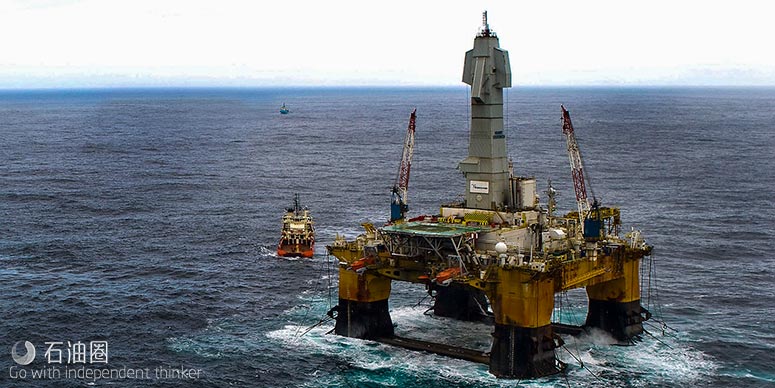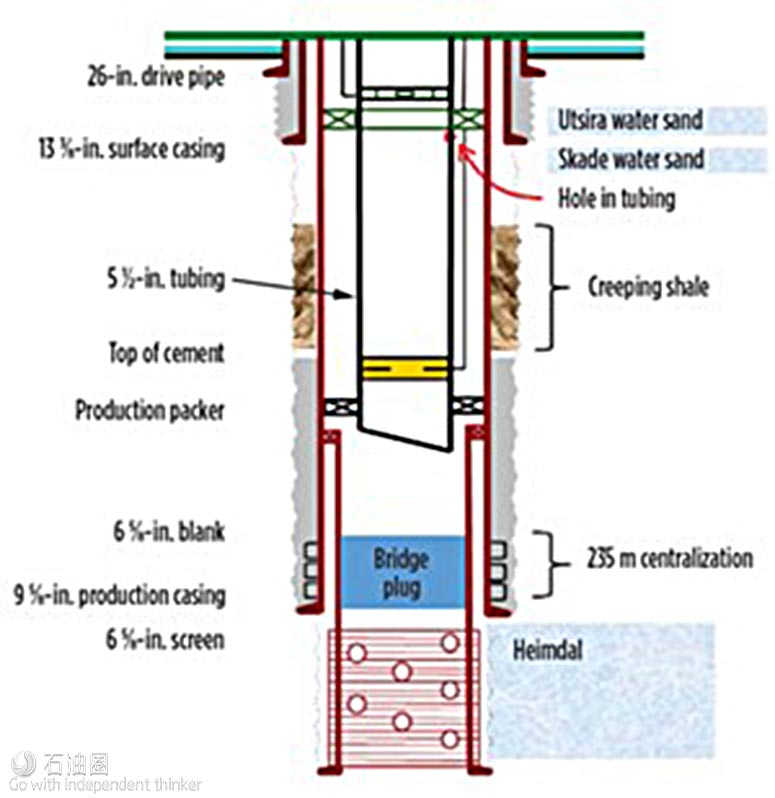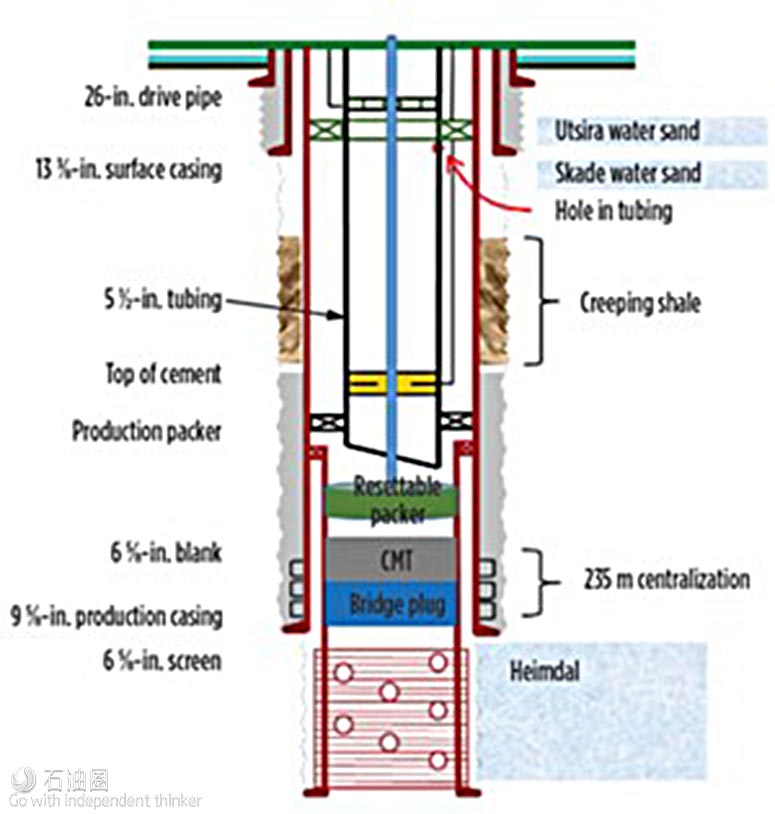MEASURING IN-SITU OPEN-HOLE STRESS
Knowing the in-situ stress of an open-hole section is desirable for several reasons. Firstly, stress values are crucial to managing an injection well to ensure that the injection zone maintains integrity with respect to cap rock strength and that no fractures are created that would allow injection fluids to go out-of-zone. In-situ stress measurements also help engineers select optimal casing shoe depths. Drilling teams are typically conservative when planning casing shoe depths when there is limited information or predictive modeling is used. However, setting casing early may drive-up well cost, or conversely, estimations may be aggressive which could lead to well control issues and implementing costly contingency plans.
The typical method used to measure in-situ stress is a wireline deployed formation testing tool. However, in wells with angles of more than 30° challenges arise due to the small volume of available hydraulic energy, which may not be sufficient for a wireline formation tester to gain accurate measurements.
Inflatable alternative. The use of an open-hole inflatable packer, equipped with pressure gauges, is a proven alternative to wireline formation testing tools. Using an inflatable open-hole packer allows access to unlimited hydraulic energy to perform the test since fluid is being pumped from surface. While this operation has a higher cost and poses greater risk, these must be weighed against the cost of the uncertainty in estimating stress.
Operators have successfully used open-hole inflatable packers to measure in-situ stress. Experience has shown that when office and rig personnel conduct detailed job planning, execution of the operation is successful. In two recent cases, companies working in an offshore environment used open-hole inflatable packers to isolate and measure in-situ stress.
Measurements were made in one case with a straddle configuration using two packers. This type of set-up enables engineers to determine exactly where the measurement was taken as opposed to when only one packer is deployed. The purpose of the test was to measure the in-situ stress to manage the injection pressure through the life of the well. The basic operation in measuring in-situ stress with an inflatable packer is to pressure up and initiate a fracture by injecting fluid into the formation while maintaining a constant injection rate. The fracture propagation pressure and closure pressure thus obtained are then used to determine the stress measurement. This test is typically repeated three times for each setting depth.
Single packer case history. The same process of propagating a fracture and then measuring the closure pressure was performed using a single packer configuration. However, with a single packer there is no way to determine at what depth below the packer the fracture was initiated. For some operators, the reduced risk of running one packer, rather than two, is more advantageous than the greater accuracy that comes from isolating an interval. This operator used a single packer approach in a deepwater application to successfully measure in-situ stress, deriving enough usable data to accurately predict the next casing point. The simplified operation generated substantial cost savings by eliminating an additional drilling liner compared to stress estimations used on previous wells.
HIGH EXPANSION ELEMENT
Deepwater plugging and abandonment (P&A) operations commonly use coiled tubing to deploy various services required in pre-abandonment procedures. In some instances, the BOP riser package for coiled tubing units can have an ID smaller than the ID of the pipe where an operation is to be performed. This restriction typically requires the use of a high expansion inflation element. Pre-abandonment work is often done to isolate production zones prior to moving in a rig to perform the full P&A procedure. Doing pre-abandonment work with a coiled tubing unit is cost effective and operationally safe. Doing the initial work on coiled tubing further allows complete well control to be maintained since the work is conducted through the existing wellhead.
Case study. A multi-well campaign was planned and required a bridge-plug be set above screens and cement dumped on top. The casing to set the bridge-plug in was 6 5/8-in. with 5?-in. tubing above. A 3?-in. inflatable element was selected based on the minimum restriction in the 5?-in. tubing. The packer was deployed to depth, and pressure was applied to inflate and set the plug. A hydraulic disconnect was used to release the tool from the plug, after which cement was spotted on top of the plug.
Once the cement had set, a pressure test was performed to assess the integrity of the plug. This typically was done by applying pressure at the surface. However, in some wells pressure integrity was lacking above the cemented bridge plug. In these cases, a multi-set packer with a 2.90-in. OD was run in the well to set just above the bridge-plug, to perform a pressure test.
Results
In all, 16 wells were successfully pre-abandoned, using inflatable plugs run on coiled tubing. Much of the success of this project was due to the detailed pre-job planning. While engineers have good intentions, in many cases not all stakeholders are included in the planning process. It is important to include platform workers, coiled tubing operators, and the actual service personnel responsible for running inflatable tools. Their input can highlight important details and identify critical contingencies. It is wise to “measure twice and cut once,” in this type of multi-well campaign.
CONCLUSION
Inflatable tool design has improved significantly over the past 20 years, and research and development is ongoing to extend the limits of the technology. These new inflatable tools provide operators with a cost-effective alternative method when a conventional approach is not possible. The primary reason for selecting an inflatable tool is to circumvent a wellbore restriction that prevents the use of a standard oilfield tool. Other reasons are to safeguard weak and/or corroded casing that might be damaged using standard methods. Inflatables also have the capability to retrieve a tool through a restriction, and efficiently handle large casing sizes where conventional tools may be in low supply or non-existent.

 石油圈
石油圈


